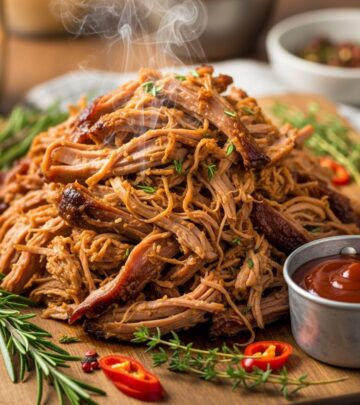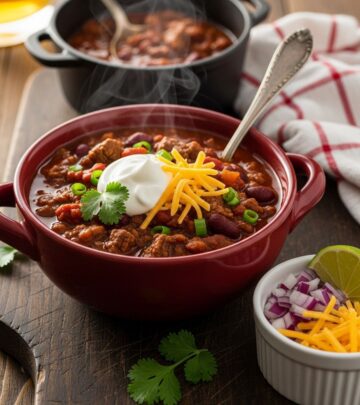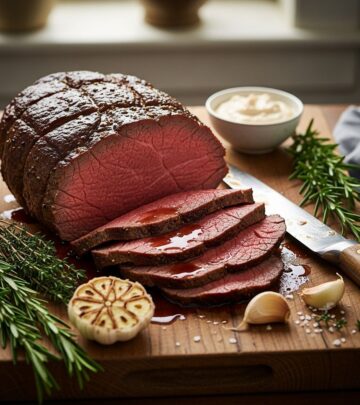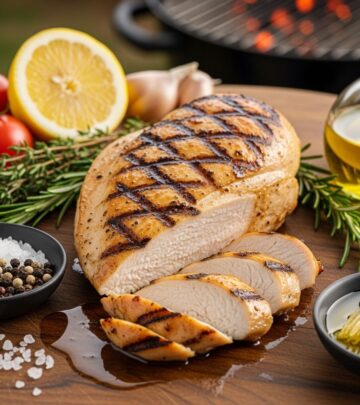The Secret Ingredient: Elevating Lamb with Pink Peppercorns
A floral, citrusy twist that lifts a classic dish into a vibrant culinary experience.
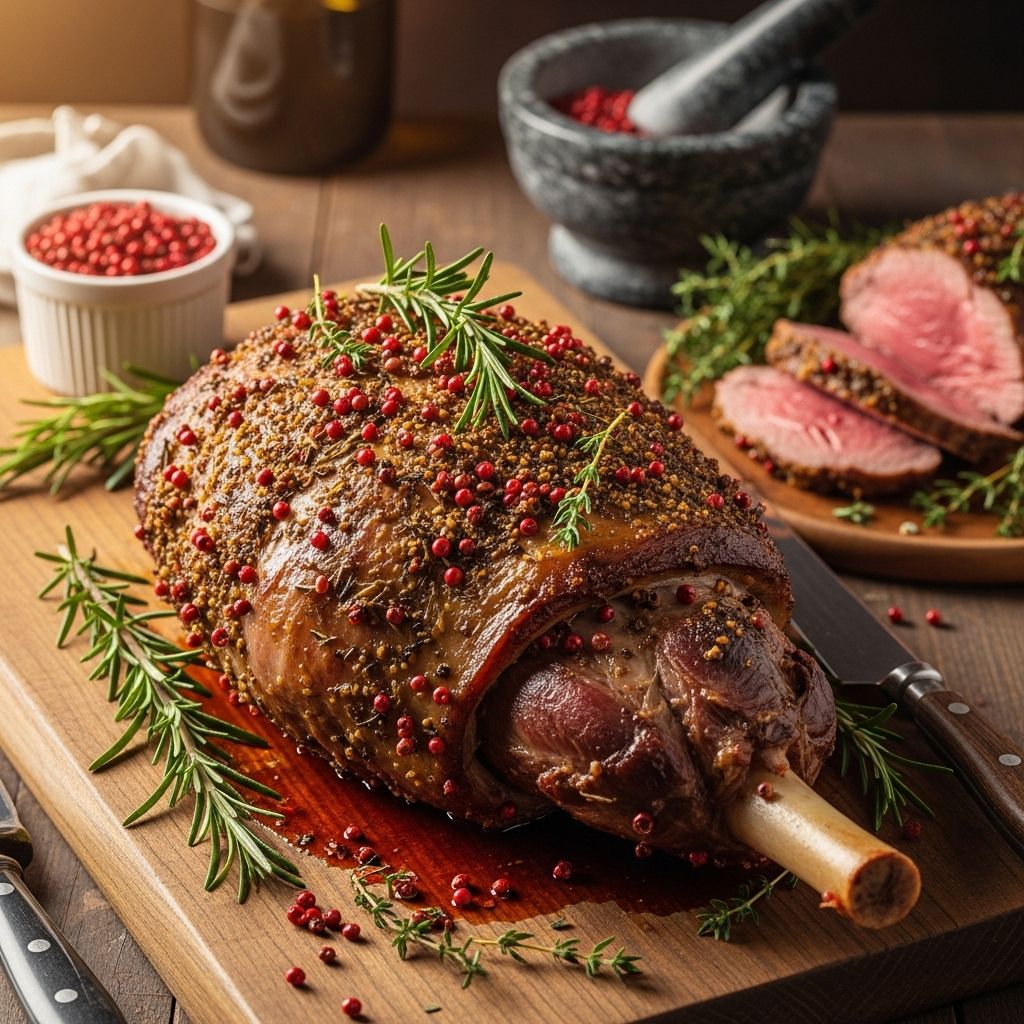
Roast lamb stands as a timeless classic in kitchens across the globe. Tender, savory, and rich, lamb is a natural centerpiece for festive gatherings and Sunday dinners alike. But tradition need not mean routine. This article reveals the transformative magic of pink peppercorns—a bold, aromatic ingredient that wakes up roast lamb, bringing modern flair to a venerable favorite.
Why Lamb Needs an Update
Lamb’s deep flavor is a culinary canvas, often painted with broad strokes of garlic, rosemary, and salt. While beautiful, this traditional profile leaves room for fresh, vibrant contrasts. Today’s cook seeks more than nostalgia; they want layers of flavor, color, and aromatic intensity. Pink peppercorns—fragrant, subtly sweet, and visually striking—are exactly this kind of ingredient.
Understanding Pink Peppercorns
Pink peppercorns are not true pepper (Piper nigrum), but rather the dried berries of the Schinus molle or Schinus terebinthifolius tree. Their delicate paper-thin husk bursts with a floral, citrusy note reminiscent of rose petals and pine, carrying far less heat than black peppercorns. They are a favorite of chefs for both their look and their complex bouquet.
- Origin: Native to South America, widely found in specialty stores worldwide.
- Profile: Sweet, slightly peppery, with mild heat and floral, resinous undertones.
- Color and Texture: Vibrant pink–red husks, brittle and easily crushed.
The Flavor Science: Why Pink Peppercorns and Lamb Work
Good seasoning is about both contrast and harmony. Pink peppercorns lift and lighten dense meat with their bright, almost berry-like sweetness. Their essential oils are volatile, dissipating into the fat of roast lamb, carrying perfume throughout the dish. The result is a roast that feels familiar yet invigorated, with the peppercorns adding both texture and aromatic complexity.
Flavor Table: Classic vs. Pink Peppercorn Lamb
| Traditional Roast Lamb | Pink Peppercorn Lamb |
|---|---|
| Salt, black pepper, rosemary, garlic | Salt, pink peppercorns, rosemary, garlic, lemon zest |
| Deeply savory and herbal | Bright, aromatic, citrusy, and herbal, with subtle sweetness |
| Warm, earthy finish | Refreshing, floral, and vibrant finish |
Choosing and Using Pink Peppercorns
The peppercorns should be whole, fresh, and vibrantly colored. Avoid faded or crushed peppercorns, which lose aroma quickly. Store in a cool, dry place, and use liberally—they lack the harsh heat of black pepper, making them ideal even for delicate palates.
- To crush: Gently press with the side of a knife or use a mortar and pestle.
- For seasoning: Mix freshly crushed peppercorns with salt, garlic, and herbs for a rub or finishing sprinkle.
- For visual flair: Reserve a few whole peppercorns for garnishing to highlight their color.
The Recipe: Pink Peppercorn Roast Lamb
Ingredients
- 1 leg of lamb (5–6 lbs), bone-in for maximum flavor
- 3 tablespoons pink peppercorns, roughly crushed
- 2 tablespoons kosher salt
- 4 cloves garlic, minced or grated
- 2 tablespoons fresh rosemary, finely chopped
- Zest of 1 lemon
- 2 tablespoons olive oil
- Freshly ground black pepper (optional, for extra depth)
Instructions
- Preheat the Oven: Heat oven to 375°F (190°C). Place rack in the lower third of the oven.
- Prepare the Lamb: Pat the leg of lamb dry with paper towels. Score the fatty surface in a crosshatch pattern, about 1/2 inch deep, being careful not to cut too far into the meat.
- Make the Seasoning Paste: In a small bowl, combine the crushed pink peppercorns, salt, garlic, rosemary, lemon zest, and olive oil. Mix until a paste forms.
- Season Liberally: Rub the seasoning paste thoroughly all over the lamb, massaging into cuts and crevices.
- Optional Marination: For best flavor, cover and refrigerate the seasoned lamb for at least 4 hours or up to overnight. Bring to room temperature before roasting.
- Roast: Place the lamb on a rack set in a roasting pan. Roast, basting once with pan juices halfway through, until an instant-read thermometer in the thickest part reads 130–135°F (54–57°C) for medium-rare, about 1 3/4 to 2 1/4 hours, depending on size.
- Rest: Transfer lamb to a cutting board. Loosely tent with foil and rest 20–30 minutes before carving.
- Slice and Serve: Slice against the grain, sprinkle with extra pink peppercorns and a pinch of salt, and serve immediately.
Serving Suggestions
- Classically paired with: Roasted root vegetables, bright salads with citrus, or herby grain pilafs.
- Modern touches: Try serving with a yogurt sauce mixed with crushed pink peppercorns, lemon, and mint.
- Beverage pairing: Dry rosé, Grenache-based reds, or even a chilled Lambrusco.
Chef’s Tips: Getting the Most Out of Pink Peppercorn Lamb
- Don’t overcrush pink peppercorns; uneven pieces make for pops of flavor and color.
- For extra aromatic punch, mix in lemon zest just before applying to lamb—the oils stay fresh and vibrant.
- If you want a low-heat variation, substitute some pink peppercorns for green peppercorns, which have mild vegetal freshness.
- Pink peppercorns are often safe for people with pepper allergies, but those with nut allergies should check carefully, as they are technically a tree fruit.
History and Cultural Context of Pink Peppercorns
Unlike their more common black and white cousins, pink peppercorns are a relative newcomer to Western kitchens. Indigenous cultures in South America valued the tree both as a spice source and for its medicinal uses, and the berries’ vibrant hue made them a prized addition to both food and spirit infusions. Their global spread came through colonial trade routes, only gaining widespread popularity among European chefs in the late 20th century as a fashionable, sophisticated garnish and flavor note.
FAQs: Cooking Lamb with Pink Peppercorns
Q: Can I use pink peppercorns in other dishes?
A: Absolutely. Pink peppercorns work beautifully with seafood, poultry, creamy sauces, and even desserts where a hint of aromatic heat is welcome.
Q: Is there a substitute for pink peppercorns?
A: No other pepper provides the exact floral note, but a mix of black pepper and coriander seed, or even Sichuan peppercorns, can approximate some of their fragrance and texture.
Q: Are pink peppercorns spicy?
A: Not in the conventional sense. They are more aromatic and sweet, with only a mild peppery heat.
Q: What is the best way to crush pink peppercorns?
A: Use a mortar and pestle, or gently crush under the side of a chef’s knife. Don’t grind too finely—large pieces add wonderful bursts of flavor and color contrast.
Q: How should I store pink peppercorns?
A: Store in a sealed jar away from light and heat. Used within six months, they maintain peak aroma and color.
Advanced Tips: Beyond the Basics
- Consider making a pink peppercorn butter: Compound unsalted butter with crushed peppercorns, lemon zest, and minced chives for an instant finishing sauce.
- Add pink peppercorns to desserts: A soft goat cheese tart or vanilla ice cream with a dusting of pink peppercorns offers a modern twist on sweet fare.
- If you have leftovers, use thinly sliced roast lamb in sandwiches with pickled onions and a pink peppercorn aioli.
Why You Should Try Pink Peppercorn with Lamb
Pink peppercorns aren’t just a visual treat or a fleeting food trend. They bring new aromatic dimensions to roast lamb, making an age-old dish feel inventive again. They flatter lamb’s richness, lift its earthiness, and deliver an experience both elegant and easy to achieve. For the home cook wanting to impress, pink peppercorns offer a shortcut to sophistication that’s more than just skin deep.
Frequently Asked Questions (FAQs)
Q: Are there any allergens associated with pink peppercorns?
A: While rare, people allergic to cashews or mangoes should use caution, as pink peppercorns come from a related plant family.
Q: What’s the main difference between pink and black peppercorns?
A: Black peppercorns are intensely spicy and earthy, while pink peppercorns are sweet, floral, and milder—bringing fragrance and color as much as subtle heat.
Q: Can this recipe be adapted for other meats?
A: Yes, pink peppercorns pair especially well with poultry, pork, and even some fish, providing balance to richer cuts.
Nutritional Insights
| Component | Approximate Value (per 8 oz serving of lamb) |
|---|---|
| Calories | 415 kcal |
| Protein | 48 g |
| Fat | 23 g |
| Carbohydrates | 2 g |
| Fiber (from pink peppercorns) | 0.5 g |
| Sodium | 980 mg |
Conclusion
Cooking with pink peppercorns turns the familiar ritual of roasting lamb into an adventure. You’ll discover new flavor highs, deepen your culinary confidence, and surprise your guests with artistry that both respects tradition and pushes boundaries. Next time lamb is on your table, reach for the pink peppercorns—and prepare for more than a meal, but a memory.
References
- https://www.seopital.co/blog/food-blog-seo
- https://www.pragm.co/post/seo-strategy-for-your-food-blog
- https://bootstrapped.ventures/seo-for-food-blogs/
- https://foodiedigital.com/seo-tips-for-food-bloggers/
- https://www.squarespace.com/blog/food-business-and-restaurant-seo
- https://simpleawesomecooking.com/the-basics-for-food-blog-seo
- https://get.grubhub.com/blog/restaurant-seo/
- https://www.hostinger.com/tutorials/restaurant-seo
- https://www.wiley.com/en-us/network/publishing/research-publishing/preparing-your-article/enhance-your-articles-visibility-a-guide-to-seo-for-journal-authors
Read full bio of Sneha Tete








